Back to Guides What are Ethereum Nodes And Sharding?
In this guide, you will learn What are Ethereum Nodes And Sharding?
If you have been active in one form or another in cryptocurrency for the last 1 year then you would know that there has been one issue which has plagued both bitcoin and Ethereum: Scalability.
Bitcoin has somewhat addressed this issue by activating Segwit and by hard forking into Bitcoin Cash. Ethereum, however, is trying to solve this issue in a different way. One of the many protocols that they are looking to activate, as they go into the next phase of their growth, is “sharding”. Before we understand what that means, we need to have a thorough understanding of networks and nodes.
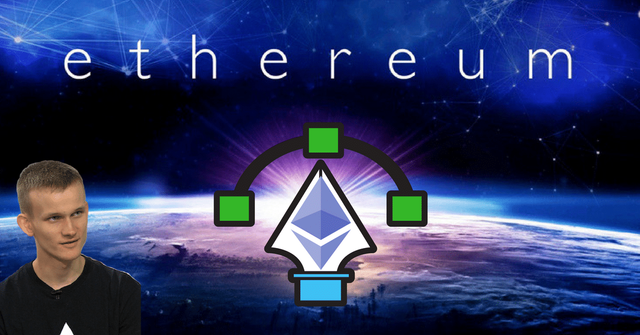
What are Ethereum Nodes And Sharding?
What are nodes, networks, and parameters?
Let’s understand what the concept means by using simple day-to-day activities.
(Before we begin, credit to 3dBuzz for the wonderful explanation.)
Think of a box:
box takes in inputs, performs some sort of operations on them, and then gives an output. This box is a “node”. Keep in mind, nodes are not exactly “boxes”, we are just using a hypothetical case here.
A network is a collection of these nodes which are interlinked to one another.
Parameters are the rules that the nodes are bound by.
That, in essence, is what nodes and networks are. Now let’s check out some simple day-to-day activities explained via nodes and networks.
Let’s see how a simple paper shredder works.
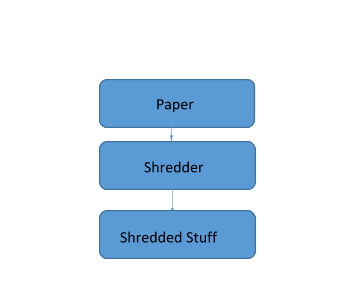
So, what happened here?
You are using three nodes: The paper the shredder and the….well…” shredded stuff”. These three nodes make up the “Shredding network”. Let’s have some more fun with this. Till now, we have assumed that nodes take in only one input. What if they take more than that?
Let’s take the example of a toaster. A toaster takes in two inputs:
Electricity
Bread
So this is what it will look like:
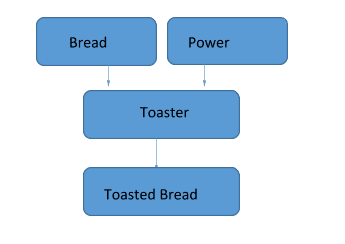
Remember one thing, a toaster can’t work if even one of its inputs is missing.
Now, it’s time to take it up another notch.
Let’s think of a complex network, which uses parameters. Think of your television set. Your television set is connected to your service provider. Suppose you own a PS4, and because you suck at making decisions, you own an Xbox as well.
So, if we were to map out the whole “TV network”, this is what it would look like:
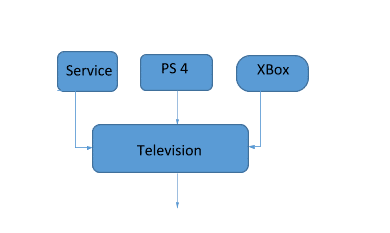
Uh, oh.. we have a problem here.
You can only access one of those nodes via your TV. You can’t really watch Game of Thrones and play Uncharted at the same time now, can you? So, how are you going to make sure that your TV can access only one node at a time? This is where you introduce the parameters. The parameters are what make your nodes unique. Suppose, you want to add a parameter to the television called “Channel Switcher”. And this is what the channel switcher works like:
If you press “0” then it will show normal TV aka service provider.
If you press “1” then you will be able to access PS4.
If you press “2” then you will be able to access Xbox.
Just by the addition of these parameters you made your node i.e. the television unique. So, let’s explore what other parameters we can give our television to make it more unique:
Size: Say, our television is a 55-inch screen.
Colour: Our TV is silvery grey in colour.
Brand: We have a Sony TV.
Type: We have a plasma screen.
Ok, so now thanks to our parameters, we have a television which is more well defined. Now we know that we have a 55 inch, silvery grey, plasma screen Sony TV.
So, from everything that we have learned so far, let’s try to define what nodes, network and parameters mean.
Nodes: Individual components which take in input and performs a function on them and gives out an output.
Network: Collection of nodes which are interconnected to one another.
Parameters: Rules that define a node and make it more unique
Nodes and Network in the context of telecommunications
Our entire telecommunications system works on the basis of networks and nodes. Your internet, calls, SMSs, every single one of those work because of carefully laid out networks and nodes. So, how do you define a telecom network? According to Encyclopedia Britannica,
“Telecom network is an electronic system of links and switches, and the controls that govern their operation, that allows for data transfer and exchange among multiple users.”
Why do we need a telecommunications network?
While it is possible to make one-to-one connections between individual people, it will be extremely expensive and cumbersome. Plus, it will be an extremely ineffective process because most of the communication lines will be idle and under/not utilized.
To make this process more efficient, we use a telecommunications network. So, what is the definition of a node in this context?
In this context, the node is either a redistribution point or a communications end-point.
So, let’s see an example of how this works. Consider a simple GSM network. Suppose, Alice wants to send an SMS to Bob, how will the entire system work? (Shoutout to Roviell YouTube channel for the explanation).
Step 1: Alice writes the message and presses send. The message goes to the Base Station aka BST. The BST connects you to the network. There are tons of BSTs around. Think of them as waiters in a restaurant. You simply raise your hand (send an SMS) and you get their attention.
Step 2: The Base Station Controller aka BSC makes sure that the BSTs are all in order and that everything is in working condition. Using our restaurant analogy, the BSC is the “maître d’hôtel” or the head waiter who makes sure that each table is been attended to by waiters. (Remember Jean Phillippe from Hell’s Kitchen? Yeah, that guy.)
Step 3: From the BSC the message now goes to the Mobile Switching Center aka MSC. It makes sure that the data moves seamlessly from the stations to the networks and vice-versa. In our restaurant analogy, the MSC are the head chefs, who take the orders and relay them to the chefs AND also put the finishing touches on the dishes before sending them out.
Step 4: Now the message gets sent to the Short Message Service Center aka SMSC. These are the chefs in the analogy. Over here, the message is saved until they get more information about the recipient. The SMSC gets help from sources like the Home Location Register (HLR) and the Visitor Location Register (VLR), these 2 are databases which contain all the information about the network. They basically help track down the sender AND the recipient to see if the message can be sent. They check whether the recipient’s phone is switched off, or if it is out of coverage area etc. If for some reason the message can’t be sent, then it gets stored in the SMSC for a maximum of 6 hours before it gets deleted.
Step 5: Now, if the SMS is good to go, the SMSC hands the message over to the recipient’s MSC.
Step 6: The SMS goes to the BSC.
Step 7: The BSC forwards the message to the BST.
Step 8: The BST then finally sends the message to the recipient.
So, this is an overview of how the entire SMS system works. The BSC, BST, MSC, SMSC, HLR and VLR are all nodes in the GSM network. This is what the whole thing looks like:
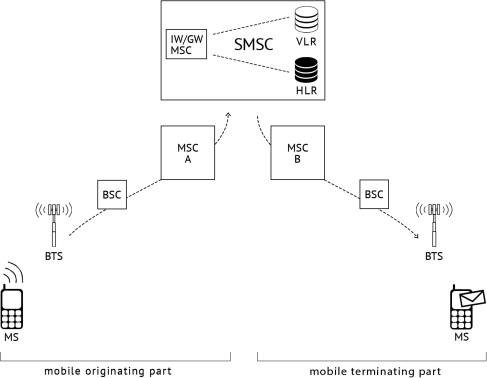
To more informarching click this link https://blockgeeks.com/guides/what-are-ethereum-nodes-and-sharding/
Hi! I am a robot. I just upvoted you! I found similar content that readers might be interested in:
https://blockgeeks.com/guides/what-are-ethereum-nodes-and-sharding/